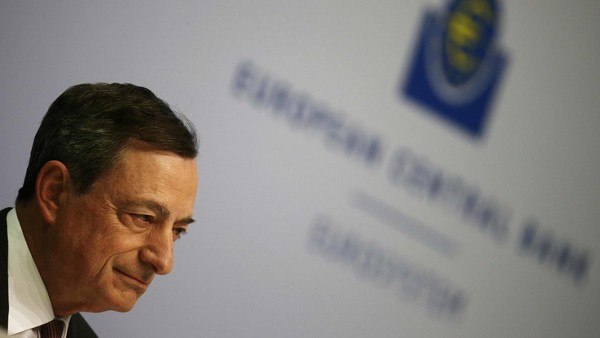Markets Insight
Cash entices as central banks diverge
Mohamed El-Erian
Fed signals December rate rise while ECB suggests more QE
Recent signals from the European Central Bank and the Federal Reserve have reignited talk of divergent monetary policies among the world’s two most influential central banks.
Following last week’s policy meeting, the Fed signalled that, contrary to consensus market expectations, the December meeting was “live” when it comes to the possibility of the first interest rate rise for almost 10 years. It did so implicitly, by downplaying concerns about international economic and financial instability that — previously — had kept the central bank on the sidelines; and explicitly, by referring to the process of “determining whether it will be appropriate to raise the target range [for the federal funds rate] at its next meeting”.
These signals stand in stark contrast to what came out of the ECB a week earlier. Mario Draghi , ECB president, indicated the central bank’s readiness to increase its large-scale security purchase programme to counter economic weakness and deflationary pressures.
The opposing policy signals bring back to the fore a policy divergence that, in recent months, had been muted by developments in the emerging world. A broad-based weakening in economic growth became evident in emerging markets during the summer, with every systemically important economy slowing (including China) and two of them in recession (Brazil and Russia). The financial market dislocations that followed raised alarm bells on both sides of the Atlantic in view of concerns about unfavourable spillovers. With that, the Fed had no choice but to signal increased dovishness at its September meeting.
Together with pockets of concern about the consequences of a less united and less market supportive central banking community, that is likely to trigger more frequent bouts of heightened equity market volatility.
The longer-term implications are harder to pin down. Persistent policy divergence will prove hard to maintain given the extent of interconnectedness, as well as limits to US willingness to allow its currency to carry the burden of the adjustment process. Either the Fed will be forced to reverse course as the US economy is pressured by persistent weakness in Europe and the emerging world; or, a more comprehensive policy response out of Europe reinvigorates growth there, enabling the ECB to start its own policy normalisation process.
In responding to these considerations, investors should revisit the conventional wisdom that cash, deemed a “wasting asset”, does not have a legitimate place in sophisticated asset allocations. Instead, this is a world in which a good cushion of cash and cash equivalents in portfolios makes sense for both strategic and tactical reasons.
In the short term, it places investors in a good position to scale into the inevitable price overshoots that are likely to materialise, together with excessive contagion within asset classes and unusual correlations between them. As we were reminded on several occasions this year, this is a market in which fundamentally solid stocks and bonds can easily get unduly contaminated by weaknesses elsewhere, especially given the high likelihood of patchy liquidity.
Over the longer term, a strategic cash cushion provides investors with an important element of resilience at a time of genuine uncertainty. It remains unclear whether the global economy will transition to broader-based growth, thereby validating elevated market prices, or tip into even lower global growth and financial instability as weaker fundamentals undermine central banks’ effectiveness in suppressing volatility and bolstering asset prices.
Mohamed El-Erian is chief economic adviser to Allianz and chair of President Barack Obama’s Global Development Council

0 comments:
Publicar un comentario